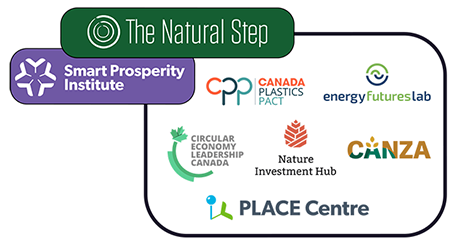The Natural Step Canada works synergistically together with our strategic partner the Smart Prosperity Institute (SPI) to help accelerate Canada's journey to being a strong and inclusive economy that thrives within nature's limits.
Innovation-Focused, Multi-Stakeholder Initiatives:
Much of our work is done through innovation-focused multi-stakeholder initiatives that place us on the front-lines of the environment and economy, working alongside major brands, policymakers, and key stakeholders.
|
 |